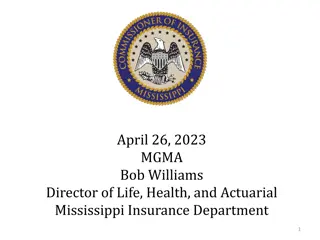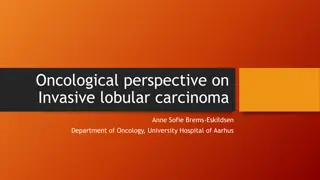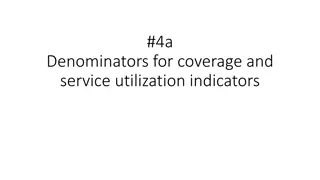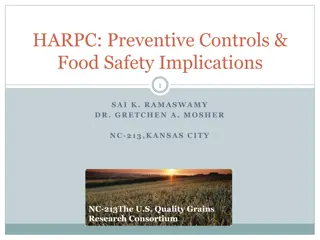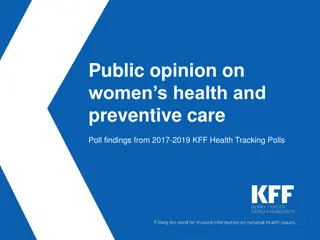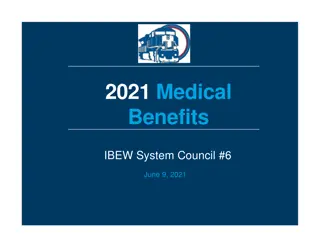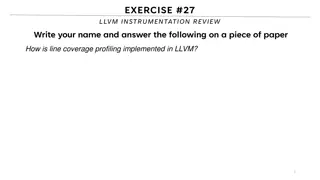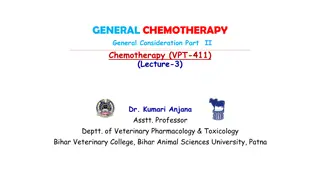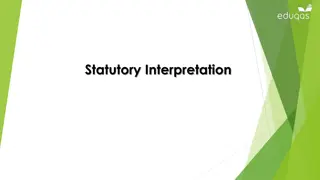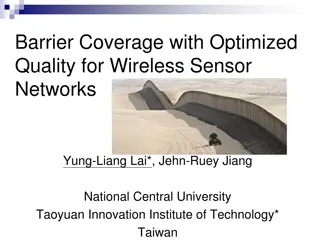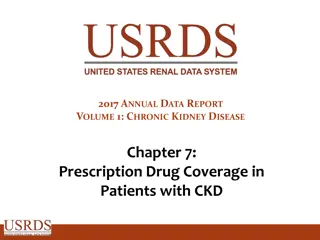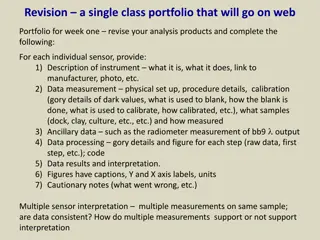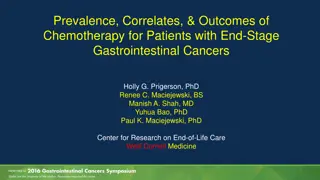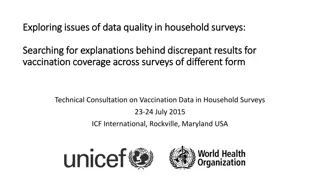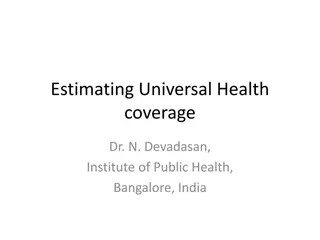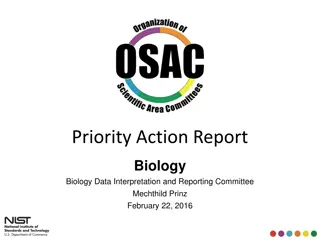Analysis and Interpretation of Preventive Chemotherapy Coverage Evaluation Results
This module focuses on the analysis and interpretation of results from preventive chemotherapy coverage evaluation surveys. It includes estimating program coverage, interpreting program reach, and identifying factors affecting coverage levels such as supply chain issues and social mobilization. The process involves compiling, analyzing, and interpreting survey data to assess if target coverage thresholds are met and to evaluate individual compliance with the medical distribution program.
Download Presentation

Please find below an Image/Link to download the presentation.
The content on the website is provided AS IS for your information and personal use only. It may not be sold, licensed, or shared on other websites without obtaining consent from the author. Download presentation by click this link. If you encounter any issues during the download, it is possible that the publisher has removed the file from their server.
E N D
Presentation Transcript
Coverage Evaluation for Preventive Chemotherapy Description of the method Training Workshop Module 3 1
Phases of a Coverage Evaluation Module 1: Planning (central level) Survey Area, Survey Population, Sample Size, Selection of Subunits Module 2: Implementation (local level) Creating segments, enumerating households, interviewing respondents Module 3: Interpretation and Action (central level) Interpretation of results, developing action plan
COVERAGE EVALUATION SURVEYS: MODULE 3: INTERPRETATION & ACTION PHASE
Analysis and Interpretation of Results Once coverage survey data collection has been complete in 30 selected segments it is time to compile, analyze and interpret the results. The two most common objectives of coverage surveys are: 1. To estimate the PC coverage and determine if it meets or exceeds the target coverage threshold 2. To validate the reported coverage Point estimates of coverage can be calculated by hand or within the CSB.
Analysis and Interpretation of Results 1. Estimating PC Coverage Because the survey methodology produces an equal probability sample, no weighting of the results is required. The estimated coverage can be calculated as follows: [Number of yes responses to offered the drug] [Total number of people surveyed] Programme Reach =
Analysis and Interpretation of Results Programme Reach Interpretation: Indicates the proportion of the population that has the opportunity to participate in MDA There is no official target threshold for this indicator Low coverage could be an indicator of supply chain issues, drug distributor challenges, or inadequate social mobilization Can be compared with surveyed coverage to isolate the rate of individual compliance with MDA
Analysis and Interpretation of Results 1. Estimating PC Coverage Because the survey methodology produces an equal probability sample, no weighting of the results is required. The estimated coverage can be calculated as follows: Survey Coverage [Number of yes responses to having swallowed the drug] [Total number of people surveyed] =
Analysis and Interpretation of Results 1. Estimating PC Coverage Compare the survey coverage with the target coverage threshold Disease Survey Population Target coverage threshold Lymphatic filariasis >65% Everybody living in the survey area Onchocerciasis >65% Everybody living in the survey area May vary, based on national treatment priorities and could include: - School age children(5-14 years) - High risk adults May vary, based on national treatment priorities and could include: - Preschool age children (1-4 years) - School age children (5-14 years) - Women of child-bearing age - Everybody living in the survey area at the time of MDA (for LF) Everybody living in the survey area 75%(applies only to SAC) Schistosomiasis 75%(applies only to SAC) Soil-transmitted helminthiasis (STH) Trachoma 80%
Analysis and Interpretation of Results 1. Estimating PC Coverage Interpretation: 100% Target Coverage Threshold Survey Coverage < Target Threshold MDA not effective and needs improvement X% 0% X% = Survey Coverage
Analysis and Interpretation of Results 1. Estimating PC Coverage Interpretation: 100% Survey Coverage > Target Threshold MDA effective, programme functioning well X% Target Coverage Threshold 0% X% = Survey Coverage
Analysis and Interpretation of Results 1. Estimating PC Coverage Interpretation: 100% Survey Coverage near Target Threshold calculate confidence interval to determine if it is above target threshold Target Coverage Threshold X% Note: the confidence intervals around survey coverage cannot be calculated by hand because they need to incorporate the cluster sampling. 0% X% = Survey Coverage
Analysis and Interpretation of Results A results entry form is available in the CSB for data entry. This form will automatically calculate the programme reach coverage and survey coverage overall and disaggregated by gender.
Analysis and Interpretation of Results Complete Exercise 3.1 Open saved CSB file
Analysis and Interpretation of Results 2. Validation of Reported Coverage The survey coverage can be compared to the reported coverage. If the two figures are similar then reported coverage can be considered validated . If the two figures are different then there may be a problem with the reported coverage. Reported Coverage Survey Coverage Y% X%
Analysis and Interpretation of Results 2. Validation of Reported Coverage But similar vs. different can be subjective. A more objective method is to calculate the two-sided 95% CI around the survey coverage and see if the reported coverage falls within this confidence interval. Survey Coverage ( ) Reported Coverage 95% confidence interval Validated! Y%
Analysis and Interpretation of Results 2. Validation of Reported Coverage But similar vs. different can be subjective. A more objective method is to calculate the two-sided 95% CI around the surveyed coverage and see if the reported coverage falls within this confidence interval. Survey Coverage Not Validated ( ) Reported Coverage 95% confidence interval Y%
Analysis and Interpretation of Results 2. Validation of Reported Coverage An online tool exists to help you calculate the 95% CI and design effect: https://analysis.linkssystem.org/ 1. Save your data in the Results Entry Form as a csv file (be sure not to add or remove any rows or columns) 2. Go to the website listed above 3. Upload your saved Results Entry Form (csv file)
Analysis and Interpretation of Results Complete Exercise 3.2
Developing an Action Plan The Action Plan helps programmes to convert the results of a coverage survey into concrete steps. The Action Plan should be developed collaboratively with the national NTD program.
Developing an Action Plan Table 3 in the WHO Coverage Evaluation Surveys for Preventive Chemotherapy: Guidelines for Implementation offers potential causes to investigate and corrective actions to take for each of the most common coverage survey findings.
Develop an Action Plan Complete Exercise 3.3 (and in Context of Nigeria)


